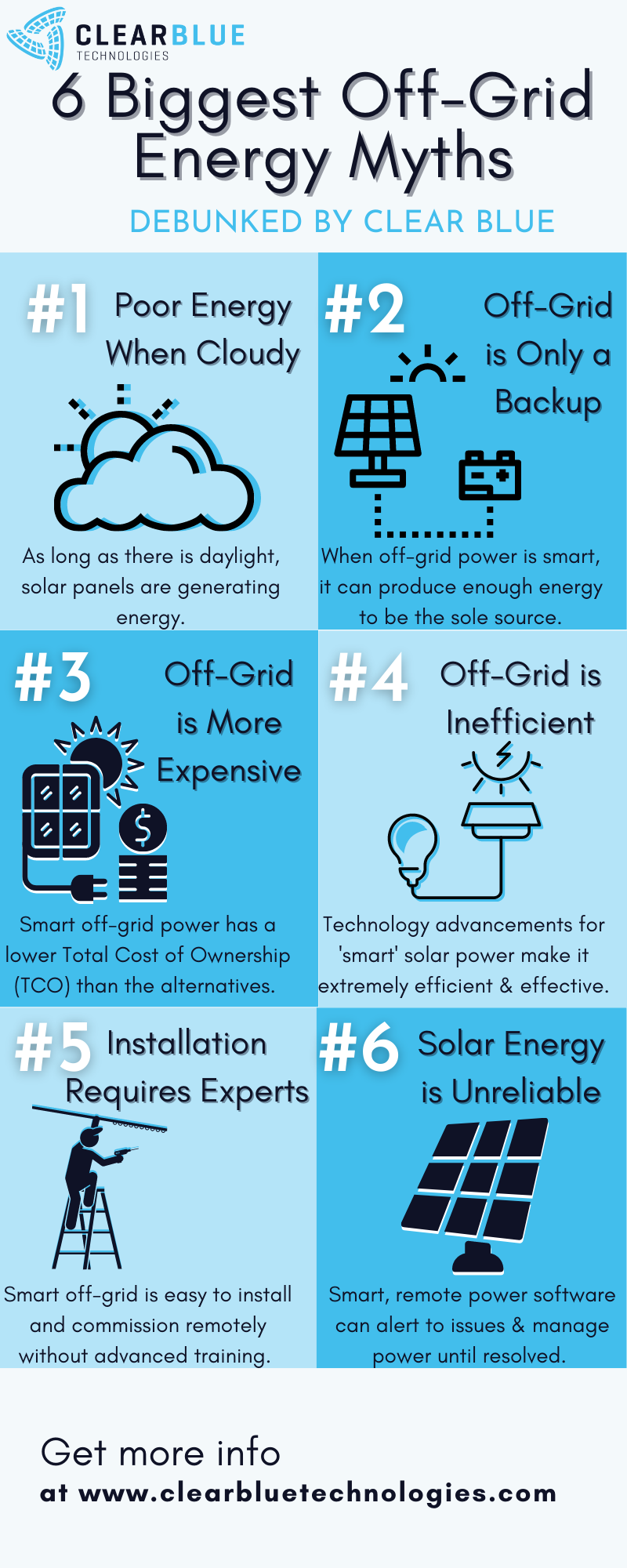The 6 Biggest Myths About Solar Power Debunked
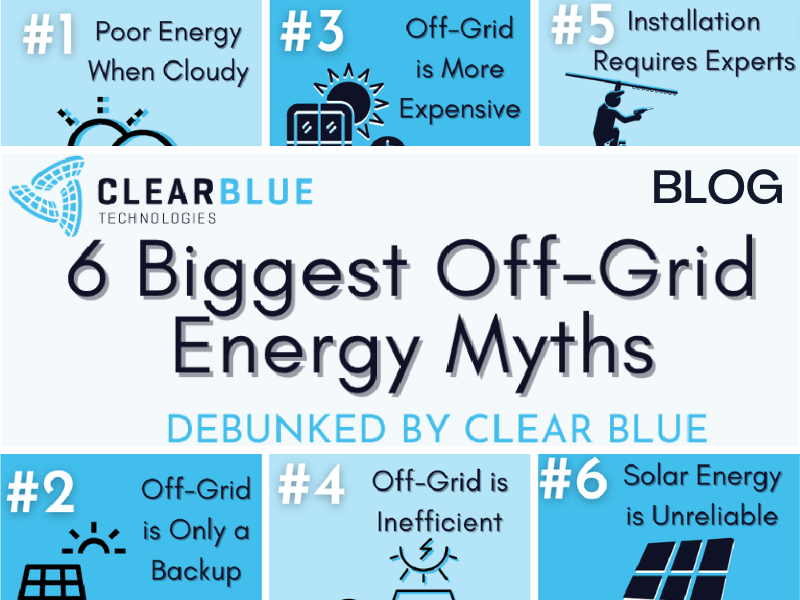
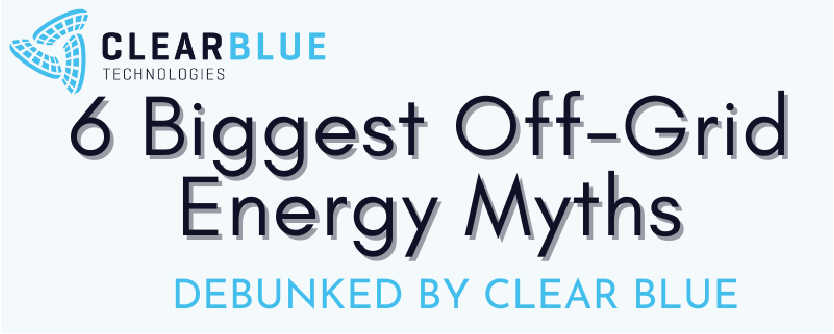
We are currently in an
exciting transition from fossil fuel energy sources and grid power to clean
energy technologies and off-grid power sources. Although clean, renewable
energy technology plays an integral role in the green transition, the
technology is still relatively unfamiliar to many. As a result, there is much
misinformation in the solar power and clean technology market.
Let’s examine some of the
most common misconceptions about solar energy, look at where they come from and
explore how they are misguided.
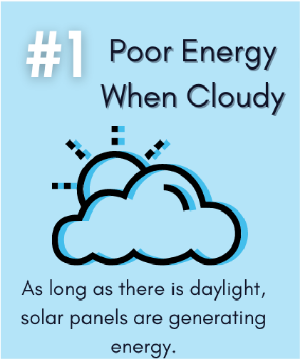
Myth #1: Solar power cannot provide energy when it is cloudy
A common assumption of people who are new to solar energy is that solar power cannot provide energy when it is cloudy, and the sun isn’t shining. It seems logical that if solar panels require energy from the sun, they would need direct sunlight to work. Therefore, it is thought that solar cannot consistently generate enough power to keep a system operating and is thereby unreliable.
However, the idea that solar power is not generated when it is cloudy is a misunderstanding of how solar panels work. As long as there is daylight, solar power is being generated. As well, the fact that the sun isn’t shining for a day won’t jeopardize the uptime of your power system if you have a ‘smart’ solar off-grid solution. All solar power systems are equipped with battery packs to store energy, but in addition to storage, Smart Off-Grid offers weather and energy forecasting, battery management, and system power management to better manage battery health and operate your system based on the energy you expect to have, so your system has maximum uptime and reliability.
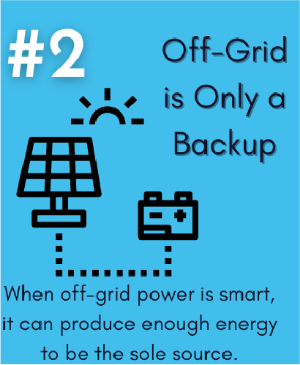
Myth #2: Solar can be used as a backup power source, but only the grid can be used as a single power source.
Simply because it has been
the traditional power method for years, the grid is thought to be more reliable
than clean energy sources. The grid looks like it has unlimited power
capabilities, and newer technologies like solar and wind power are sometimes
thought to be reliable backup power to the grid. Still, they are often
considered too unreliable to serve as the single source of power.
Once again, this is an unjustified
myth, given today’s technological advances and particularly when the off-grid
power system is ‘smart.’ When you include energy storage technology, as well as
advanced energy forecasting and management, your power system becomes smart. In
addition, smart systems can be monitored and controlled remotely, making them
more reliable than the grid and a significantly better option for challenging
environments. Most importantly, the grid is ageing and quite
susceptible to disruptions from harsh weather events in many cases. Smart Off-Grid solar power, on the
other hand, provides resiliency even in the face of extreme weather.

Myth #3 Solar power is more expensive than grid power.
The most common misconception
about solar power is the idea that solar energy is more expensive than the
grid. There is a belief that solar power is not worth the investment, as it is
much more costly and complicated than the grid.
The idea that solar power is more expensive than the grid results from solar being relatively new and people not fully understanding the market. Solar-powered systems seemingly require a larger capital investment (CAPEX) than traditional grid-powered systems. Many using grid power don’t see the true costs of implementing electrical grid networks and don’t have to consider this when implementing a solar street light. However, compared to installing grid infrastructure in a new location, the investment in off-grid power can be lower or comparable. The operating costs (OPEX) of solar systems are minimal, and the ongoing cost of power transmission/generation is eliminated. Operating costs are minimized because Smart Off-Grid systems can be monitored, managed, and maintained remotely through cloud software.
As a result, costly maintenance site visits common with grid systems are avoided. In the long run, solar systems are more affordable because ongoing costs are minimal, while grid power requires significant ongoing operation and maintenance costs. As solar and battery technology continues to progress, the cost-advantage of using solar power will only become more significant.
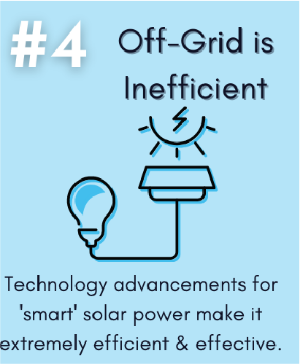
Myth #4: Solar technology is highly inefficient.
Solar panels are viewed as extremely energy inefficient, requiring a great number and a tremendous amount of space to equalize grid power. The truth is that since solar panels have become more common, technology has evolved and developed rapidly. As a result, solar panels are far more efficient than they once were, and the technology will continue to improve. As well, with Smart Off-Grid capabilities, you can manage and control your system remotely, so you need fewer solar panels to achieve the same power output as traditional solar solutions to ensure your system always stays on.
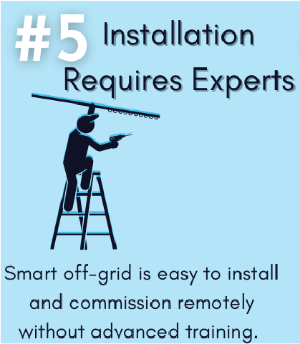
Myth #5 Off-grid solar systems require specialized, expert installers.
Again, due to the novelty of
solar power, it is thought that installing off-grid solar power systems requires
expert installers who are specifically trained in the installation of solar
systems. As a result, installation costs are high.
Although some knowledge is
needed as an installer, this is largely a myth, especially for Smart Off-Grid
solutions. Smart Off-Grid solar installations require no special training or
previous expertise. Instead, any electrical installer can install a system
given its plug-and-play design. Smart Off-Grid systems can be installed
anywhere, and installations are relatively simple. The systems are designed to
be straightforward to install out of the box, with a colour-coded design to
minimize installation, an app for easy commissioning and advanced cloud
management to reduce operating costs.

Myth #6: Shading and dusting eliminate the advantages of solar systems, making them unreliable.
There is a major concern that
'dusting' and shading of solar panels cause system downtime. As a result,
people in environments prone to dust are hesitant to use solar because they
think it is unreliable.
However, Smart Off-Grid
enables 24/7 remote monitoring and energy forecasting. Furthermore, through
Smart Off-Grid, you have full system visibility to understand how to manage
your system’s power for maximum uptime. For instance, you can proactively
manage your system by turning down power consumption until the problem can be
permanently resolved. As a result, Smart Off-Grid technology prevents system
downtime and improves reliability in all environments.
Ultimately, solar power is still a relatively new technology for many consumers, and the market is rife with misinformation about the technology. However, as off-grid power becomes increasingly important in our green energy transition, it is essential to deconstruct misconceptions to foster industry growth and adopt the technology for a clean energy future.
